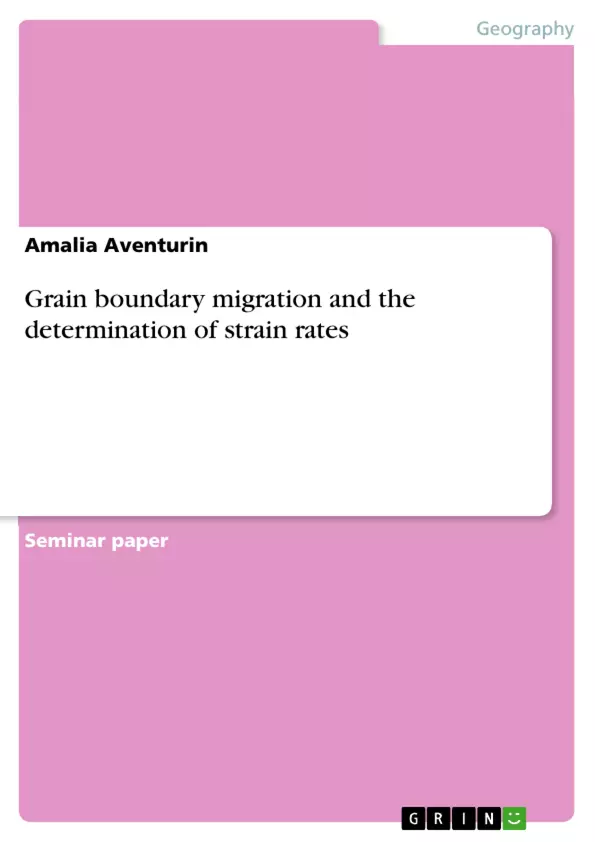The thin section consists of angular shaped grains with µm to mm size. The grains are in contact to each other and show different colors. The boundaries between the grains have a sharp differentiation. The starting deformation process leads to a transport of the grains in south east direction (highest pressure direction) of the thin section. Through this process the grains start to move and change their form. Some grain boundaries begin to blend with other boundaries and as a result the grains get bigger. Smaller grains in the thin section get “eaten” from the big ones and disappear completely in the big grains. The grain size is changing in bigger shape. The different thin section particles are moving through the picture and show that the boundaries are changing like a fluid through the deformation process. During the progressive time the grain size gets always bigger (most grains show a mm size) because through the deformation process more and more grains get “eaten” by the big ones. [...]
Inhaltsverzeichnis (Table of Contents)
- I. Description of the microstructural development
- II. Deformation methodic with aid of marker particles
- III. Development of the deformation tensor
- IV. Deformation tensor with a Mohr-cycle
- V. Deformation rate vertical to the main stress field
Zielsetzung und Themenschwerpunkte (Objectives and Key Themes)
The text aims to analyze the deformation process in a thin section by focusing on grain boundary migration and the development of a deformation tensor. The analysis utilizes marker particles to track grain movement and deformation.
- Microstructural Development and Grain Boundary Migration
- Deformation Methodic with Marker Particles
- Development of the Deformation Tensor
- Grain Shape and Size Changes during Deformation
- Application of PowerPoint and other software for data analysis
Zusammenfassung der Kapitel (Chapter Summaries)
I. Description of the microstructural development: This chapter describes the initial microstructural features of the thin section, focusing on the angular shaped grains of different sizes and colors. It then examines how the deformation process affects the grains, leading to grain boundary migration, grain growth, and changes in grain shape. This chapter also includes visual illustrations of the changes in grain size and boundary location.
II. Deformation methodic with aid of marker particles: This chapter focuses on the use of marker particles in the thin section. These particles are used to identify the deformation process and construct a deformation tensor. The chapter explains how the marker particles move during deformation, and how these movements can be used to track grain rotation and identify key points for tensor development.
III. Development of the deformation tensor: This chapter elaborates on the process of constructing the deformation tensor using the marker particles. The chapter discusses the selection of a reference point and other marker points, and then explains the steps involved in using software like PowerPoint to track the movement of these points during deformation.
Schlüsselwörter (Keywords)
Grain boundary migration, deformation tensor, marker particles, microstructural analysis, thin section, grain size, grain shape, PowerPoint, deformation methodic, reference point.
- Quote paper
- Amalia Aventurin (Author), 2013, Grain boundary migration and the determination of strain rates, Munich, GRIN Verlag, https://www.grin.com/document/272600



